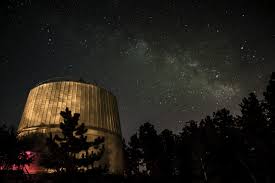The Lowell Observatory in Flagstaff, Arizona, has recently achieved a major milestone. It was named the best science museum in the United States by Newsweek. Not only that, it was also listed as one of the top 100 best places in the world by Time Magazine.
The observatory has been around since 1894, making it one of the oldest astronomy centers in the country. Interestingly, it started its mission to explore the stars nearly 20 years before Arizona officially became a state.
Every year, the observatory attracts over 100,000 visitors from all over the globe. Its blend of rich history, scientific achievements, and community outreach makes it a standout place for anyone curious about space and science.
A Rich History of Star-Gazing and Discovery
One person who knows the observatory better than anyone is Kevin Schindler, the official historian of Lowell Observatory. This month, Schindler is celebrating 30 years of working at the observatory.
“I’ve been here a long time because I love the place,” said Schindler.
Over the years, he has witnessed many changes and improvements at the observatory. However, what hasn’t changed is Lowell’s commitment to making science accessible to everyone.
Schindler pointed out that the recent awards are not just about the museum’s exhibits but also about its strong mission and legacy.
“We always knew it’s a special place, but receiving national and international recognition is truly satisfying,” he shared. “Percival Lowell, the founder, believed there’s no point in doing science if you can’t share it with everyone.”
Leading the Way in Dark Sky Preservation
The Lowell Observatory has played a key role in protecting the night sky. Back in 1958, long before the idea of light pollution was a global concern, Flagstaff took an important step. Thanks to efforts led by the observatory, Flagstaff became the world’s first dark sky city.
“They passed the world’s first outdoor light ordinance,” Schindler explained. “That made Flagstaff a model for other cities worldwide.”
This ordinance limited outdoor lighting to reduce light pollution, helping both astronomers and the general public to enjoy clear views of the stars.
A Hotspot for Astrotourism
Because of its ideal location and dedication to preserving dark skies, the observatory has become a top destination for astrotourism. Visitors, amateur astronomers, and scientists travel from far and wide to observe and learn more about the universe here.
Beyond sightseeing, the observatory offers educational programs, special events, and interactive exhibits that allow visitors to engage with space science in a hands-on way.
Inspiring the Next Generation
Looking to the future, Schindler hopes that Lowell Observatory will continue to spark curiosity and inspire young minds.
“Being able to step back, look up at the night sky, and understand your place in the universe—it’s a special experience,” he said.
With its rich history, scientific achievements, and commitment to sharing knowledge, Lowell Observatory isn’t just a museum. It’s a place where people can dream, learn, and feel connected to something bigger.
Disclaimer – Our team has carefully fact-checked this article to make sure it’s accurate and free from any misinformation. We’re dedicated to keeping our content honest and reliable for our readers.

